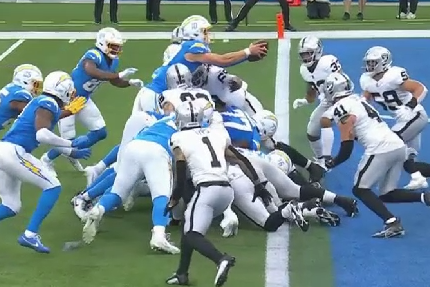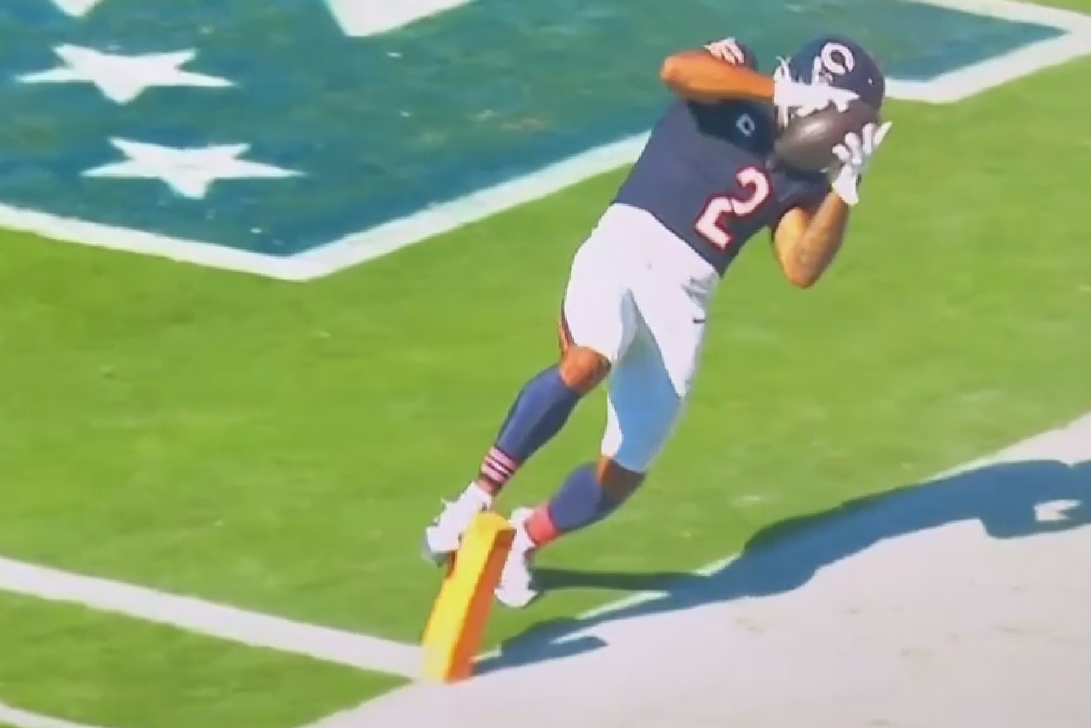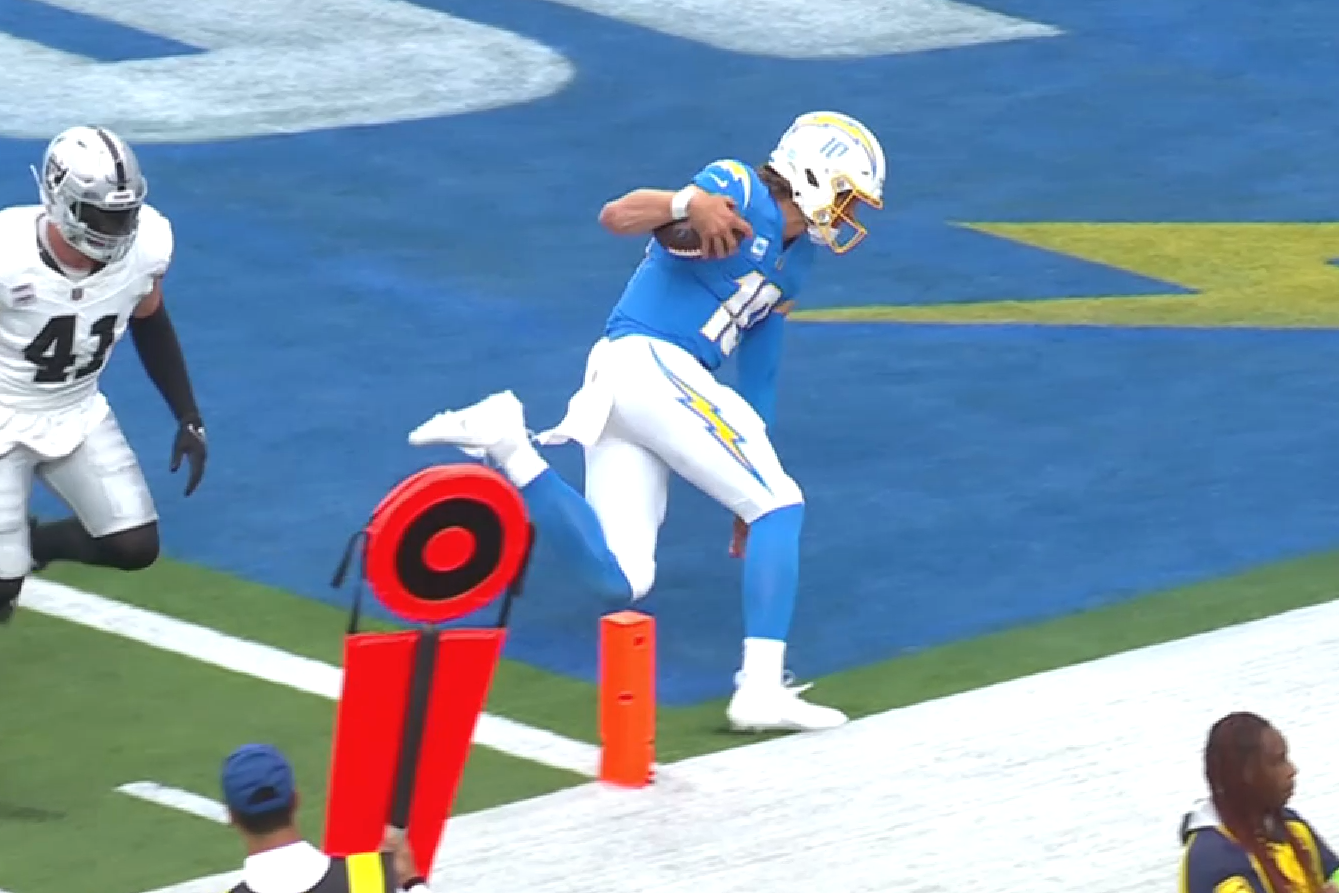16 Games, Sept. 28/30/Oct. 1, 2023
566 +2/232\\
Week 4: 79 touchdowns, 3 ATDs
LV@LAC: Phantom touchdown
Even the staunchest defenders of the break-the-plane rule might wonder how the Chargers’ Justin Herbert was awarded six points for this absurdist attempt at an Easy Bake/Easy Score.
We have come to see that coaches and QBs recognize one of the easiest shortcuts to collecting six points is the goal line jump ball Herbert attempted here, They secretly love the wave-and-you’re-in airspace touchdown.
But Herbert short-armed his effort and never, to our eyes, dented the plane of the goal line. Our screenshot captures the furthest point he extended the ball. Yet apparently that was close enough for the field officials and the booth review crew. We just shake our heads in befuddlement.
For a game that demands receivers to get both feet in bounds in order to be credited with a mere reception, we find it hard to fathom that at the end zone ball carriers can never make contact with the designated scoring area but still walk away with six points.
It’s similar to a bowler who simply steps up to the foul line, holds the ball near it, and suddenly gets credit for a strike. Magical. Hocus Bogus Rating: 5

Video and images: CBS Sports
DEN@CHI: That’s a real toe-tapper
This play, ruled a touchdown, elicited a lot of chatter. Should it have counted?
Chicago’s DJ Moore was airborne when he caught a pass from Justin Fields, touched the end zone with the left foot, then spun and swiped the pylon with his right foot before he landed out of bounds. Good enough?
Well-known rules arbiter Dean Blandino offered an online opinion that the pass should have been ruled incomplete, noting that touching the pylon should have had no influence on the call. That surprises us — though we have long been baffled by the league’s position on pylons, as noted in our Puzzle of the Pylon article.
The NFL Rulebook tells us, curiously, that pylons are in the end zone [Rule 3 (Definitions), Section 12 (The Field), Article 3 (End Zone)], even though pylons are positioned on the sidelines (out-of-bounds territory). Yet Blandino does not think that interpretation supports the ruling on Moore’s catch. And we agree.
The play highlights how much confusion surrounds pylons. They sit out of bounds, but perhaps because of the pylons-are-in-the-end-zone rule just cited, the officials might have figured Moore’s foot tap was therefore an indicator of being inbounds. They regularly award six points to runners who bash into a pylon. Why not extend the same thinking, however illogical, to a receiver?
To end such confusion, we advocate for a rule change that removes pylons, out-of-bounds objects, from the discussion entirely. Moore should have been required to get both feet in bounds while possessing the ball. He clearly did not. But field officials and the booth reviewers apparently were mesmerized by Moore’s contact with the pylon and ruled it a score. Pylons really are puzzling things. Rating: 4.5
Video and image: CBS Sports

LV@LAC: Picky, but it should be the rule
For this play, if the rule we endorse was in effect — a ball carrier only receives credit for a touchdown if he first makes inbounds contact with the end zone when he and the ball cross the goal line — it would not be ruled a score.
Yes, Justin Herbert broke the plane, but the edge of his right foot nicked the sideline when he made first contact with the end zone.
That might seem especially fussy to some readers, but if our rule was actually placed in effect, we believe players would soon adjust to the new requirements. If defenders are successful at forcing runners that far wide of the end zone, we figure they should be rewarded for their effort. Rating: 1

Video and image: CBS Sports
